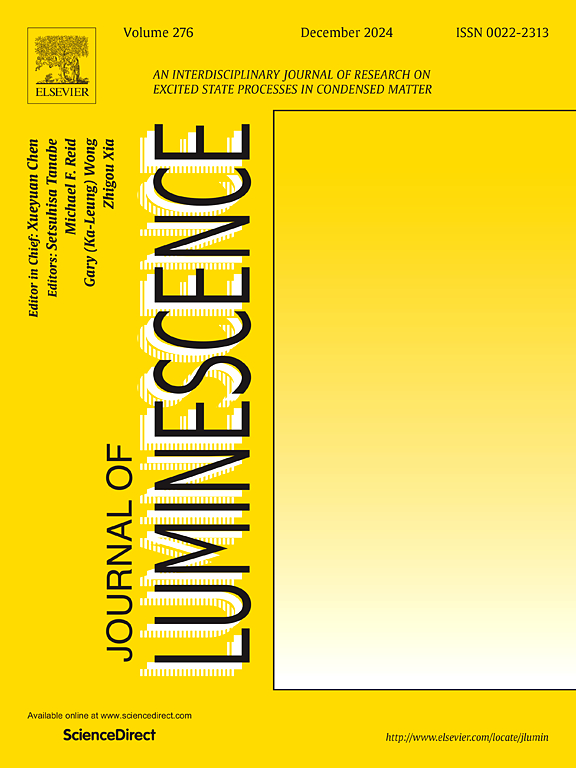CdTe层厚度对低温多模光学测温的影响
IF 3.3
3区 物理与天体物理
Q2 OPTICS
引用次数: 0
摘要
传统的接触式测温在低温范围内面临着诸多挑战。遥感测温技术,特别是光学测温技术,具有快速响应、高空间和温度分辨率的特点,是一个很有前途的解决方案。在20-70 K的低温范围内,对具有不同CdTe层厚度的ZnTe/CdTe纳米结构作为多模温度传感器进行了测试。通过监测红外光谱、光谱位置、带宽和能隙提供温度读数,提高了测温的可靠性。从测温性能的角度研究了碲化镉层厚度的影响。利用能隙获得了9.8% K−1@20K的最佳热敏度,而利用光谱位置获得了0.2 K@20K的最低温度分辨率。尽管1 ML样品具有更好的测温性能,但2 ML样品为光学测温提供了更广泛的温度敏感参数选择,使其更加通用。本文章由计算机程序翻译,如有差异,请以英文原文为准。
Effect of CdTe layer thickness on multimode optical thermometry for cryogenic temperatures
Traditional contact thermometry faces a lot of challenges in the cryogenic temperature range. Remote temperature sensing techniques, especially optical thermometry, offering fast response, high spatial and temperature resolution could be a promising solution. Here, ZnTe/CdTe nanostructures with different CdTe layer thicknesses were tested as multimode temperature sensors in the cryogenic range of 20–70 K. The temperature reading was provided by monitoring LIR, spectral position, bandwidth, and energy gap, which enhances the reliability of thermometry. The effect of CdTe layer thickness was studied in terms of thermometric performances. The best thermal sensitivity of 9.8 % K−1@20K was achieved using the energy gap, while the minimum temperature resolution of 0.2 K@20K was obtained using the spectral position. Despite the better thermometric performance of the 1 ML sample, the 2 ML sample offers a wider choice of temperature-sensitive parameters for optical thermometry, making it more versatile.
求助全文
通过发布文献求助,成功后即可免费获取论文全文。
去求助
来源期刊

Journal of Luminescence
物理-光学
CiteScore
6.70
自引率
13.90%
发文量
850
审稿时长
3.8 months
期刊介绍:
The purpose of the Journal of Luminescence is to provide a means of communication between scientists in different disciplines who share a common interest in the electronic excited states of molecular, ionic and covalent systems, whether crystalline, amorphous, or liquid.
We invite original papers and reviews on such subjects as: exciton and polariton dynamics, dynamics of localized excited states, energy and charge transport in ordered and disordered systems, radiative and non-radiative recombination, relaxation processes, vibronic interactions in electronic excited states, photochemistry in condensed systems, excited state resonance, double resonance, spin dynamics, selective excitation spectroscopy, hole burning, coherent processes in excited states, (e.g. coherent optical transients, photon echoes, transient gratings), multiphoton processes, optical bistability, photochromism, and new techniques for the study of excited states. This list is not intended to be exhaustive. Papers in the traditional areas of optical spectroscopy (absorption, MCD, luminescence, Raman scattering) are welcome. Papers on applications (phosphors, scintillators, electro- and cathodo-luminescence, radiography, bioimaging, solar energy, energy conversion, etc.) are also welcome if they present results of scientific, rather than only technological interest. However, papers containing purely theoretical results, not related to phenomena in the excited states, as well as papers using luminescence spectroscopy to perform routine analytical chemistry or biochemistry procedures, are outside the scope of the journal. Some exceptions will be possible at the discretion of the editors.
 求助内容:
求助内容: 应助结果提醒方式:
应助结果提醒方式:


